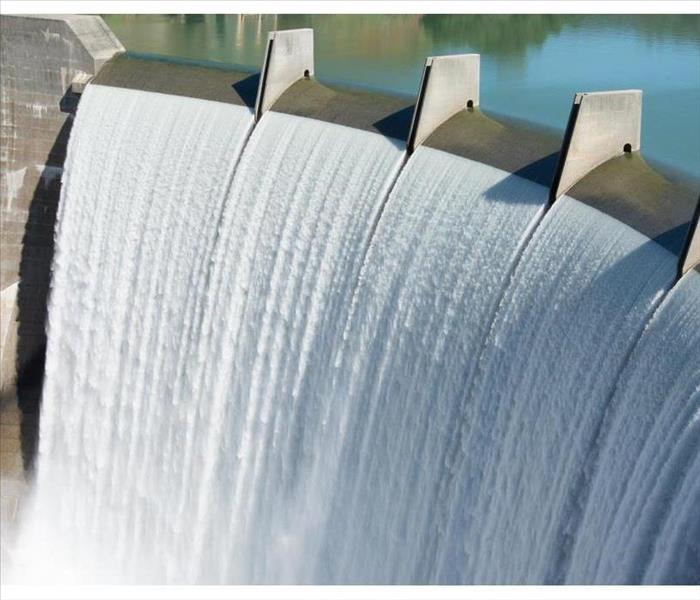Sluice, Don’t Fail Me Now
2/5/2022 (Permalink)
Four Types of Water Control Systems
When moving your business to an area that deals with high water levels, it is essential to understand how that city goes about flood prevention. While you can purchase flood insurance and make emergency response plans, you shouldn’t have to worry that your city isn’t doing its fair share to protect you. There are mainly four types of water control systems used by cities all over the world, and it pays to understand how they work.
1. Dikes
One of the most common tools used to prevent and even stop flooding is a dike. Made of earth and rock, dikes resemble natural structures. This type of barrier originated in the Netherlands where most of the population lives below sea level.
2. Dams
Another barrier used to prevent high water levels; a dam is typically constructed of steel and concrete. These large man-made objects are used to control water levels and also to distribute water for activities, like consumption, industrialization, irrigation and much more.
3. Sluices
A sluice is a pressure-activated gate that is used to prevent flooding by essentially using controlled flooding techniques. When water levels are low, the gate remains sealed, but when the pressure increases the gate opens, allowing water levels to fall.
4. Locks
Water locks are used more in the transportation industry but are also a means of controlling water levels. There are two gates connected by a channel. The water level is higher behind one gate than the other. When necessary, the high-level gate opens flooding the channel, this is followed by a similar action by the low-level gate.
Granted, knowing how your city responds to flooding is useful, but when a flood happens, you will need to rely more on your own protective measures. Ensuring that you have flood insurance and a response plan from a disaster restoration specialist in the Fremont Street, NV, area are likely your best options.
Operating in an area with high water levels can be nerve-wracking. That’s why, while it is important to know your cities preparation plans, it is more important to have plans of your own.





 24/7 Emergency Service
24/7 Emergency Service
